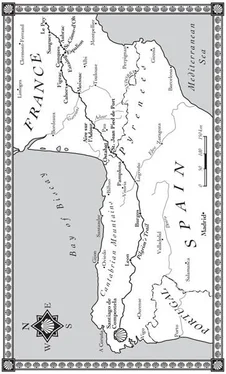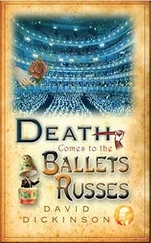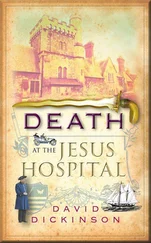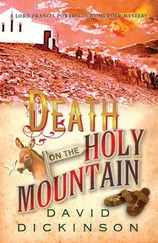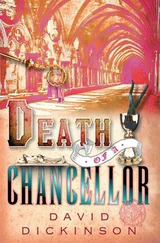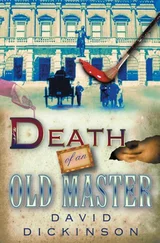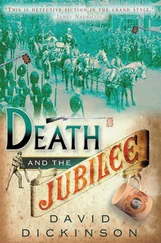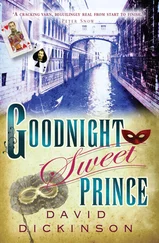David Dickinson - Death of a Pilgrim
Здесь есть возможность читать онлайн «David Dickinson - Death of a Pilgrim» весь текст электронной книги совершенно бесплатно (целиком полную версию без сокращений). В некоторых случаях можно слушать аудио, скачать через торрент в формате fb2 и присутствует краткое содержание. Жанр: Исторический детектив, на английском языке. Описание произведения, (предисловие) а так же отзывы посетителей доступны на портале библиотеки ЛибКат.
- Название:Death of a Pilgrim
- Автор:
- Жанр:
- Год:неизвестен
- ISBN:нет данных
- Рейтинг книги:5 / 5. Голосов: 1
-
Избранное:Добавить в избранное
- Отзывы:
-
Ваша оценка:
- 100
- 1
- 2
- 3
- 4
- 5
Death of a Pilgrim: краткое содержание, описание и аннотация
Предлагаем к чтению аннотацию, описание, краткое содержание или предисловие (зависит от того, что написал сам автор книги «Death of a Pilgrim»). Если вы не нашли необходимую информацию о книге — напишите в комментариях, мы постараемся отыскать её.
Death of a Pilgrim — читать онлайн бесплатно полную книгу (весь текст) целиком
Ниже представлен текст книги, разбитый по страницам. Система сохранения места последней прочитанной страницы, позволяет с удобством читать онлайн бесплатно книгу «Death of a Pilgrim», без необходимости каждый раз заново искать на чём Вы остановились. Поставьте закладку, и сможете в любой момент перейти на страницу, на которой закончили чтение.
Интервал:
Закладка:
But there was another statue that fascinated Powerscourt. It enthralled him. Its beauty was such, he told Lady Lucy later that evening, that he felt ravished by it. On either side of the south door there was a saint, presumably by the same hand that produced the tympanum above. On the left was St Paul, looking businesslike with a bible. On the right was St Jerome, a figure who did not look as if he belonged in the world of 1120 when the abbey was built. He belonged in another century altogether, hundreds of years in the future. He might even, Powerscourt thought, belong in the present. This St Jerome looked about thirty years old. His body was long, dressed in a flowing tunic, and he carried a scroll in his hands. The face and the beard and the long moustaches were all intertwined, with delicate grooves of hair that looked so soft you wanted to stroke them. His eyes, in so far as you could tell nearly eight hundred years after the sculptor finally laid down his chisel, seemed to look inward. The face was delicate, dreamy, almost feminine. Powerscourt had to remind himself that it was carved from granite, not the softest of materials. This was a man of sorrows, acquainted with grief. He looked as if he might be carrying all the sins of the world on his shoulders. The face and the expression could have been those of Christ himself, carrying his cross to his own version of the Last Judgement to the place which is called Calvary where they crucified him, and the malefactors, one on the right hand and the other on the left. It was the modernity of the face that haunted Powerscourt, who described it to himself as a symphony in melancholy.
Halfway between the abbey and the entrance to the cloisters there was a clatter of wheels and the reassuring noise of horses’ hooves on cobblestones. The pilgrims had arrived. They clambered round Powerscourt and Lady Lucy like excited schoolchildren released to liberty at last after a long period of detention. And they complained. They complained about the solitary confinement in the police cells. They complained about the food. They complained about conditions in the train, where they alleged the sanitary arrangements weren’t fit for pigs. They complained about the French police and their total failure to understand a word of English. The Inspector and his men shepherded them as gently as they could towards the cloisters, the Inspector confiding in a whisper to Powerscourt that he would be very relieved when they were all over the border. The prisoners had evolved their very own means of revolt. They refused to speak to him through his interpreter. They refused to speak to him at all, even in their own language, except, he thought, to swear at him. That, he said, was the only thing capable of bringing a smile to their faces.
They were just inside the cloisters when they were overwhelmed. A never-ending procession of young men in black cassocks marched in and pushed the pilgrims out of the way. Trainee priests, Leger said to Powerscourt, come to Moissac on a Sunday morning to see how their predecessors had lived in former times. Powerscourt thought there was no danger of the south of France being short of cures and monsignors and bishops in the years ahead. He thought there were over two hundred of them, maybe three hundred. The beauty of the cloisters was obscured by a black cloud of bodies. The pilgrims virtually disappeared behind a sea of cassocks. Two older men, also dressed in black, hopped over the little parapet at the bottom of the pillars and made their way into the middle of the grass in the centre. Behind them an enormous cedar tree offered shade to monks and visitors. The taller man, obviously the supervisor or tutor to the young men, introduced his colleague, a professor of history from the University of Bordeaux, a tubby little man scarcely over five feet tall but with a deep penetrating voice that had obviously been trained to reach the back of the biggest lecture hall in his university. He began by telling them about the foundation of the abbey. After five minutes he had reached the time of Dagobert’s son Clovis the Second who was apparently King of Neustria and Burgundy in the year 650. Powerscourt had to whisper a reply to Lady Lucy that no, he had no idea at all where Neustria was. After ten minutes things were looking up at the abbey when rich property owners Nizezius – possibly an early version of Michael Delaney, Powerscourt thought – and his wife, who was actually called Ermintrude, shelled out thirty thousand acres of land in the Garonne along with all the churches, mills, serfs, settlers and freemen thereon in 680. That seemed to reawaken interest in the young ordinands, whose eyes had been glazing over at the long litany of dead abbots and dead princes. After fifteen minutes the professor introduced a character called Louis the Pious who took the place under his protection. And so it went on. And on, Powerscout said to himself.
The sun was moving round the pillars, changing the areas of shade and light and the colour of the brick. Powerscourt felt a moment of relief when he realized that the history lesson might stop when the professor reached the 1100s when the cloister was built. The professor did indeed reach the year 1100. But he did not stop. He knew about architecture too, the professor, and he was not going to miss this opportunity of sharing his knowledge with the seminarians.
Powerscourt stared across at the opposite gallery. He could see about half a dozen pilgrims penned against the pillars but no more. He couldn’t see anything at all to his left or right. He presumed the rest were trapped round the other galleries. West gallery, the professor said, and now he was describing the sculptures on the capitals, the top of the pillars. Number two over there, he went on, the sacrifice of Abraham and Isaac. That took a minute or two. Some of the capitals were decorative, with no sculpture at all. These merited only a brief mention. Then there was Daniel in the lion’s den. Another couple of minutes. Powerscourt began doing some serious mental arithmetic. He reckoned there must be about eighty capitals with sculptures. One minute each and that meant an hour and twenty minutes. Make it a minute and a half and that was two hours. Surely the little man couldn’t go on that long. God in heaven.
Across the grass Powerscourt saw that Inspector Leger might have been making similar calculations. He was wriggling free from a scrum about four deep. There was a certain amount of pushing and shoving and then he was lost to sight. Powerscourt wondered if he should join him. After a couple of minutes the resurrection of Lazarus at pillar number nine was on the menu. Powerscourt thought that if Lazarus knew he was going to be brought back to life here and now with this interminable lecture in these cloisters he might decide to stay where he was. He saw the Inspector again making his way across the opposite gallery. He was looking worried. After a couple more minutes the professor was pointing to an inscription on pillar number twelve which referred to the construction of the buildings in 1100 when Dom Ansquitil was abbot. The Inspector was making frantic gestures to Powerscourt to join him. Then, paying no attention to the senior clergy in the centre, he hopped inside the cloisters and made his way very slowly along the four galleries. Powerscourt decided to join him.
‘Count the pilgrims,’ the Inspector whispered.
Michael Delaney and Alex Bentley were sandwiched in between a couple of very tall ordinands. Jack O’Driscoll and Christy Delaney were squashed against a pillar. Maggie Delaney was closer to Father Kennedy than she would have thought proper. The rest were scattered around the cloisters in various degrees of discomfort. Inspector Leger and Powerscourt did their rounds twice. The professor had reached murder with the story of Cain and Abel at pillar number nineteen. The Frenchman drew Powerscourt into the street outside. The church bells were tolling the Angelus. There was a small crowd in front of the tympanum.
Читать дальшеИнтервал:
Закладка:
Похожие книги на «Death of a Pilgrim»
Представляем Вашему вниманию похожие книги на «Death of a Pilgrim» списком для выбора. Мы отобрали схожую по названию и смыслу литературу в надежде предоставить читателям больше вариантов отыскать новые, интересные, ещё непрочитанные произведения.
Обсуждение, отзывы о книге «Death of a Pilgrim» и просто собственные мнения читателей. Оставьте ваши комментарии, напишите, что Вы думаете о произведении, его смысле или главных героях. Укажите что конкретно понравилось, а что нет, и почему Вы так считаете.
